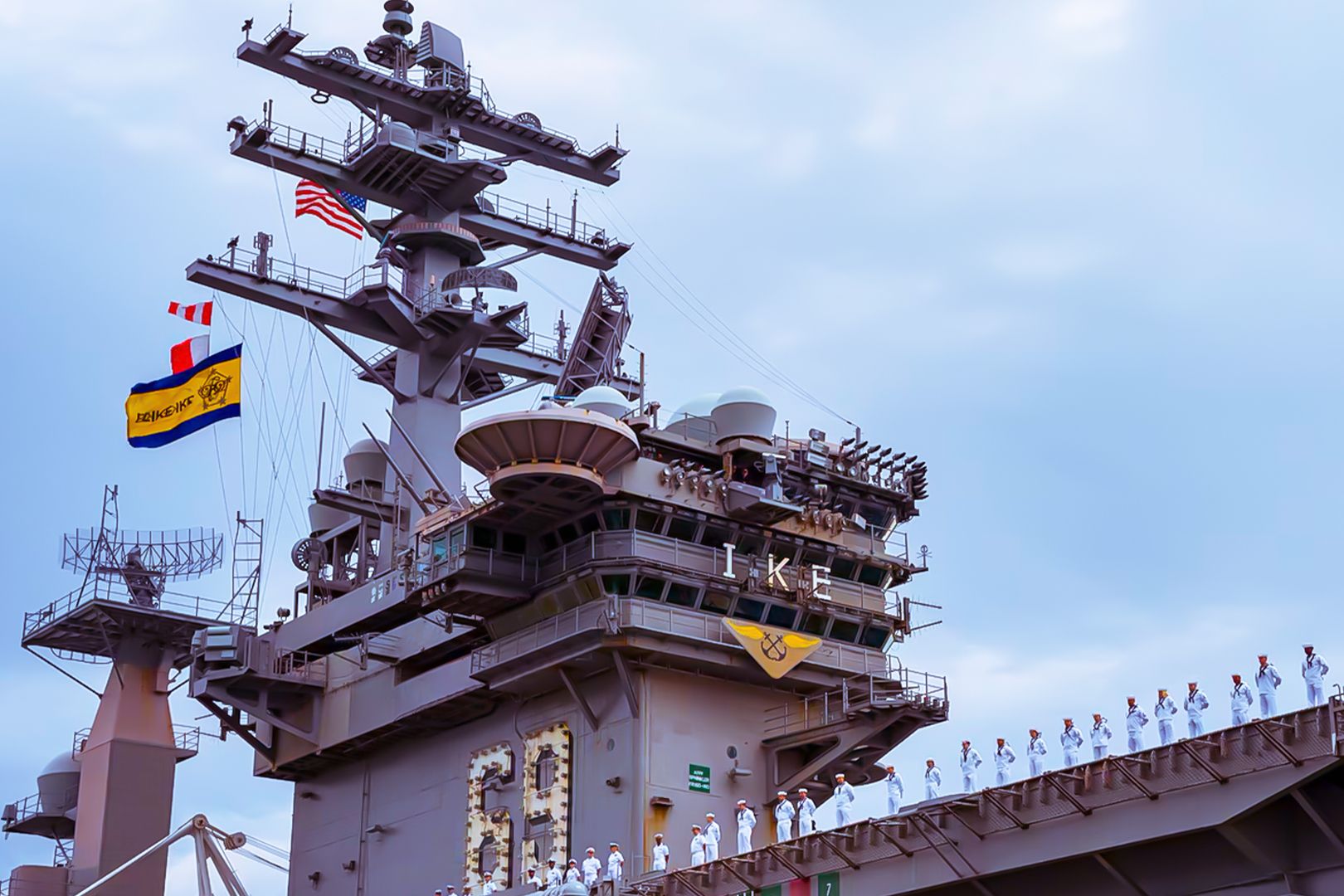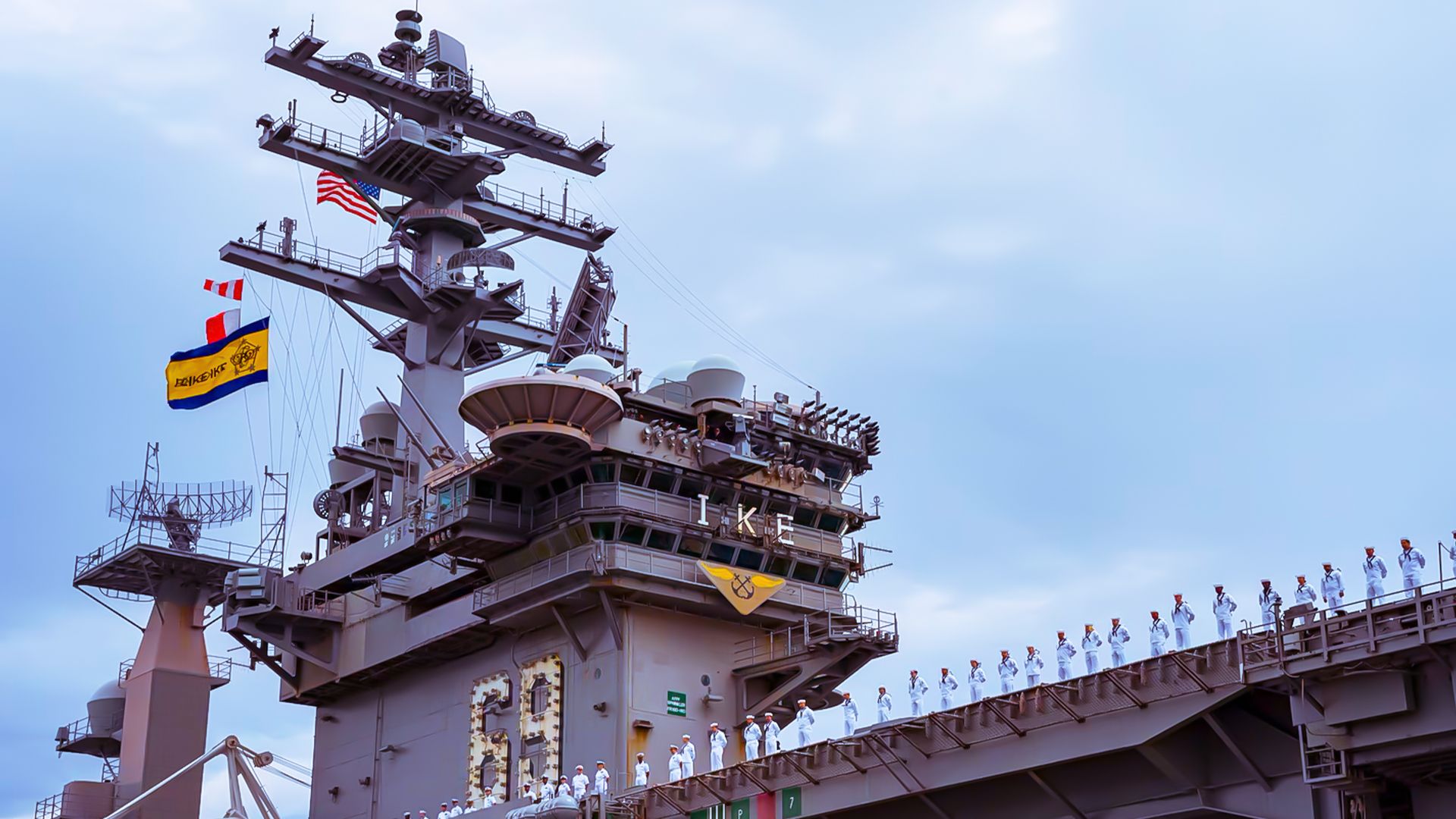
For anybody who’s ever served on an aircraft carrier (or any other surface warship for that matter), or has, at the very least, read the late great Tom Clancy’s bestselling novel Red Storm Rising (co-written in 1987 with former U.S. Naval Officer Larry Bond), that two-word phrase will make their hairs stand on end, as that’s the brevity code for incoming hostile anti-ship missiles. Although aircraft carriers remain the US Navy’s primary power projection tools. they also make fat, juicy, highly desirable targets for America’s enemies. With that in mind, Simple Flying now examines the Top 5 current threats to the “flattops.”
A primary source for this list is a September 2024 article in The National Interest by Brandon J. Weichert titled “5 Reasons U.S. Aircraft Carriers Are More Vulnerable Than Ever.” However, I don’t necessarily concur with Mr. Weichert’s rather pessimistic conclusion that “The carrier’s days are coming to an end.”
1
Unmanned Underwater Vehicles (UUVs)…and manned submarines
Stealth and invisibility beneath the waves
Weichert’s list only mentions the UUVs, but I’m taking the initiative of including manned submarines as well, as the latter have a long-established history as carrier-killers dating back to WWII. To name just a few examples:
- The Imperial Japanese Navy’s (IJN) 69,000-ton Shinano ( 信濃), the world’s first supercarrier (a converted battleship, originally a sister ship to the Yamato [ 大和] and Musashi [武蔵], the largest and most powerful battleships even afloat), sunk during her sea trials — a mere 10 days after her commissioning no less(!) — by four torpedoes from the US Navy submarine USS Archerfish (SS-311), skippered by Commander (later retired Captain) Joseph Francis Enright (September 18, 1910 – July 20, 2000). She remains the largest warship ever sunk by a submarine.
- The USN’s USS Yorktown (CV-5; affectionately known as “The Fighting Lady”), sunk by the IJN submarine I-168 during the Battle of Midway.
- The Royal Navy submarine HMS Courageous (Pennant number 50), sunk by the Nazi German Kriegsmarine Unterseeboot U-29.
Needless to say, today’s manned diesel-electric and nuclear-powered subs are even more deadly, stealthy, and sophisticated than those so-called “pig boats” of WWII. These subs have the ability to target carriers with torpedoes, mines, and ballistic missiles alike. Some examples:
Meanwhile, as far as the UUVs are concerned, Mr. Weichert says this:
“More importantly, though, these tiny undersea demons could be outfitted to carry high-yield explosives and hunt their unsuspecting prey down relentlessly until it reached that target to deliver its awful payload…Interestingly, the US Navy and its allies are having to contend with this growing scourge in the Red Sea, as the Iranian-backed, Yemen-based Houthi Rebels have reportedly been deploying these unmanned systems against shipping in that region.”
2
Unmanned Aerial Vehicles (UAVs)
Just ask the Russian Navy!
So far, UAVs haven’t pulled off an aircraft carrier sinking, but it’s not farfetched to picture it happening. After all, the Ukrainians have used drones with deadly effect against Russia’s once-vaunted Black Sea Fleet, with a prime example being the August 2023 drone strike that severely damaged the Russian landing ship Olenegorsky Gornyak (Оленегорский горняк, “Olenegorsk Miner”)
And, of course, closer to home (metaphorically and psychologically speaking, at least, if not literally) for our American readers, back in May, the Houthi insurgents in Yemen claimed to have targeted the aircraft carrier USS Dwight D. Eisenhower (CVN-69), though fortunately the terrorists’ claims of actually striking and damaging the “Ike” turned out to be (channeling Mark Twain here) “greatly exaggerated.” That said, the Houthis’ Iranian-made Shahed drones did come within 1,500 yards (1,371 m) of the carrier.
3
“Carrier Killer” Missile Barrage
A2/AD strategy
The People’s Republic of China (PRC, i.e., Red China), revanchist Russia, the Islamic Republic of Iran, and the Democratic People’s Repubic of Korea (DPRK, i.e., North Korea) have all developed what is known as anti-access/area denial (A2/AD) capabilities specifically designed to blunt the threat of US aircraft carriers. Red China has been the leader of this four nation-pack.
The ChiComs (Chinese communists, that is) 0ossess two versions of their so-called ‘Carrier Killer’ missile platforms, the Dong-Feng 21D (DF-21D), which has an effective range of about 1,000 miles. A second, more advanced system has been fielded known as the Dong-Feng 26B (DF-26B), with a range of 2,600 miles. Any carrier within ranges of these Dong-Fengs is likely to get its flight deck obliterated.”
4
Hypersonic Missiles
Speed kills
According to the Missile Defense Advocacy Alliance (MDAA), headed up by my friend and fellow USC alumnus Riki Ellison:
“Hypersonic weapons refer to weapons that travel faster than Mach 5 (~3,800mph [6,115 km/h]) and have the capability to maneuver during the entire flight. “
The MDAA info page adds:
“Hypersonic missiles are delivered in two ways: (1) they can be fired from the last stages of Intercontinental Ballistic Missiles (ICBM) or Submarine-Launched Ballistic Missiles (SLBM) and skip along the top of the atmosphere using specialized jet engines to accelerate to hypersonic speeds; or (2) they can be launched independently or released from a bomber—similar to cruise missiles—before accelerating to ultra-high speeds.”
What’s more, these missiles have unpredictable manuevering capabilities which increase the likelihood that they will catastrophically damage or sink the American carriers. Sadly and scarily, the United States is lagging far behind revanchist Russia and Red China in the development of hypersonic missile technology:
5
Nuclear weapons
The ultimate nightmare (Doomsday) scenario
All of all the threats on this list, this one still has the lowest probability of being employed, but in this increasingly dangerous day & age that we live in, it cannot be discounted entirely.
In addition to the direct kinetic nuclear strike against the carriers, one must consider the possibility of an electromagnetic pulse (EMP) strike against the carriers via a nuclear weapon detonated above the atmosphere, thus frying the electrical components of the warship and its warplanes alike and thus rendering them deaf, dumb, and blind.

